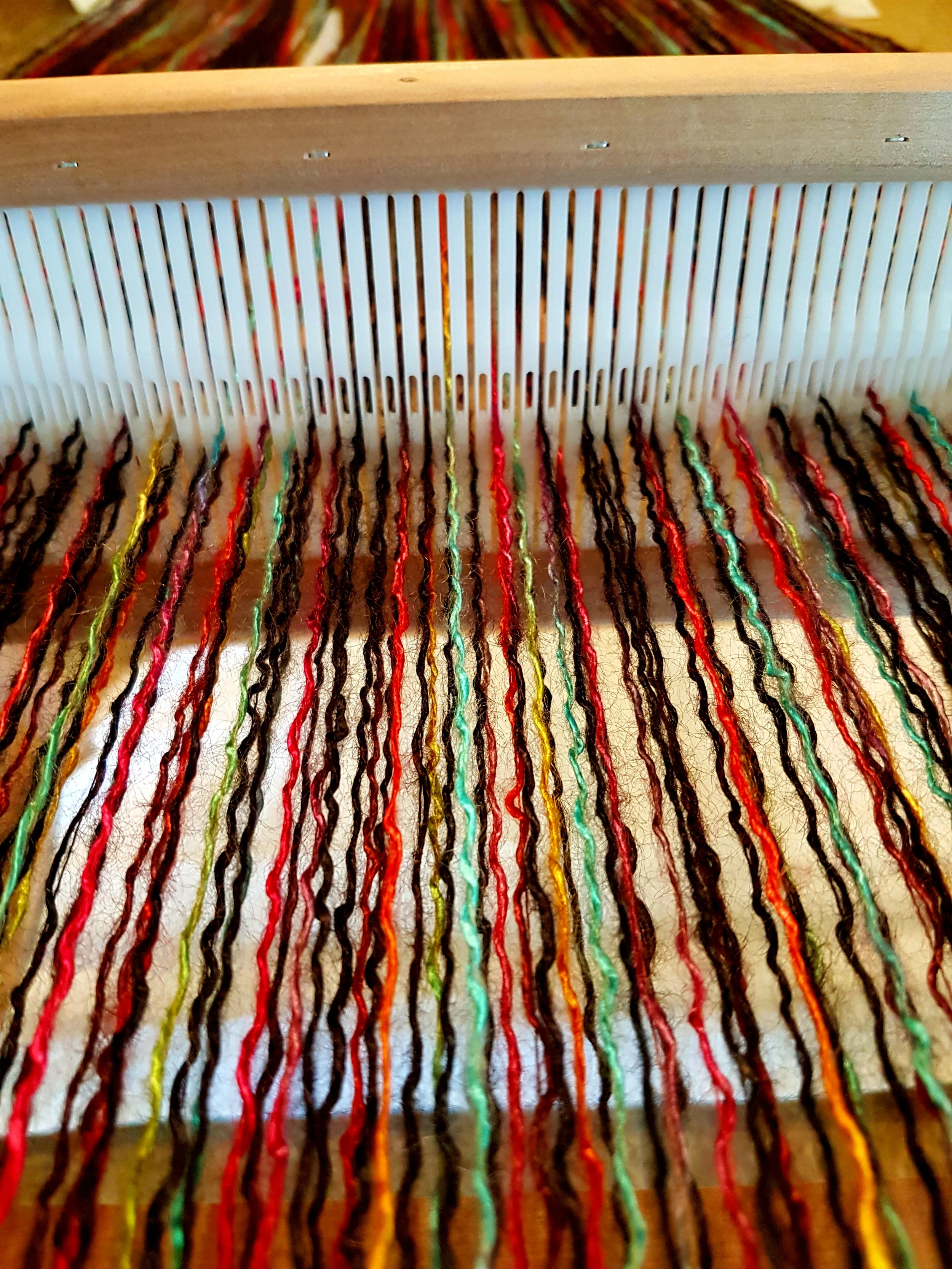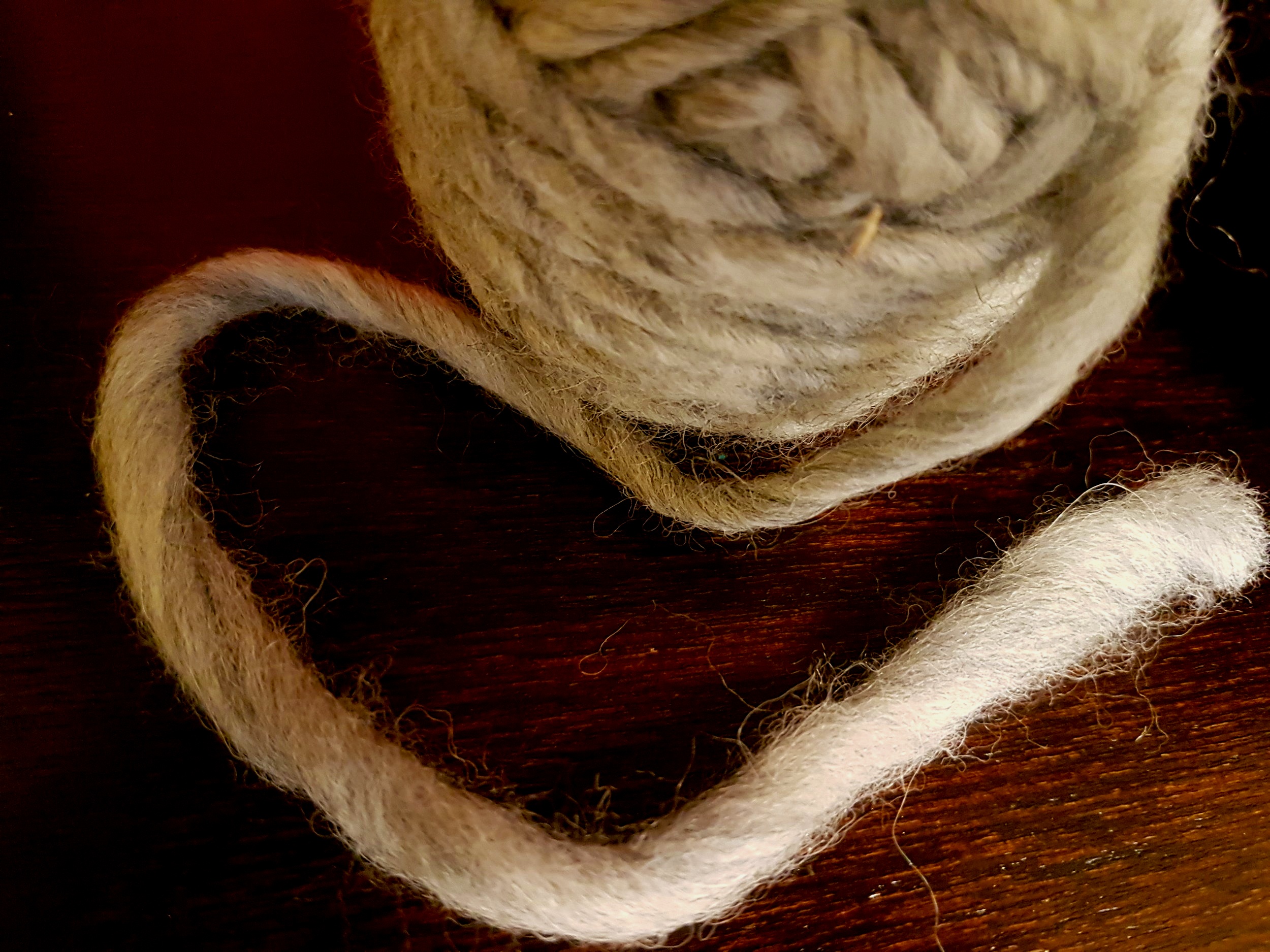More About Yarn
I love yarn. I love how it looks on the shelf all neat and tidy. I love petting it and feeling the different textures. I love the feel of it running through my fingers, some so soft and smooth you hardly feel it, others can leave a groove in my finger if I wind too fast. Cotton, wool, silk, alpaca, yak, llama, bamboo, linen, cashmere…it’s all beautiful. Each has it’s place in weaving. Nearly anything can be used for weft. Even non yarns like lavender stalks, cloth strips, wood slats or strings of beads. Choosing the right warp yarn takes a little more care.
Warp threads refers to the long end to end fibres that run the length of a scarf, placemat or bolt of fabric. Warping the loom means placing each of those threads on the loom in a neat orderly way with no twists and an even tension. The threads need to be under enough tension to allow them to rise and lower to create a clear shed for the weft to pass through. Even 1 loose thread can cause havoc in a project. It’s the tension that can cause problems when choosing a warp yarn and that’s what we’ll discuss today.
loose 1 ply yarn
If you’re willing, you can warp with almost any yarn on a rigid heddle. A rigid heddle needs less tension than a floor loom and using a stick shuttle rather than a boat shuttle helps with a challenging warp. The one thing to really steer clear of is a loose spun yarn particularly if it is a single ply. How can you tell if it is loose spun? First, take a look, does it look like its been twisted a lot or just a little? Next, pull on it. Hold your hands about a foot apart and gently pull. Does the yarn drift apart? If yes, this will not make a good warp! If it breaks with a snap it’s probably ok.
Top yarn snapped, bottom yarn drifted apart
What about a thick and thin yarn? If you look at a thick and thin yarn you will see that the thin bits have lots of twist and the thick bits have very little (there is a sciency reason for this, but we don’t need to know it to appreciate the yarn!) Do the pull test…the twist in the thin bits *might* be enough to hold the thick bits together if you are willing to fiddle a bit and repair a thread or two. In my experience the trouble is worth the texture created by a thick and thin yarn. The pull test is useful, but don’t eliminate a fibre just because it fails this test. Try 5 or 6 ends together and see what happens. There is strength in numbers and while a single thread may not have the strength to withstand the pull test, many threads working together may.
Left has frayed in the heddle
The second consideration when choosing warp is the abrasion test. A warp end will break because it is pulled too tight or because it shreds. Put a piece of the yarn through a hole in the heddle you want to use and rub it back and forth. Does the yarn start to shred? And if so, how quickly? If it shreds in just a few swipes I’d avoid it. Unless you really love it in which case *maybe* thread a few ends as accents in slots only. If it takes a couple dozen rubs, go for it. If you don’t like the fuzz that is created by the abrasion advance your warp more often. Alternatively, you can reduce the abrasion to almost zero if you use a hair pick to press the weft into place rather than the heddle.
This failed the pull test, I used it anyway and love the result…and did’t break a single thread!
There are people in the weaving world who will say “never use this or that” for warp. They have good reasons for this. I’m sure the rules they follow ensure that they have a successful (and enjoyable) project every time. I’m the Rogue Weaver for a reason. I don’t follow rules well, in fact, I see them as a challenge. It means that not all my projects work out. Or they do but the process wasn’t as smooth as I might desire. But I weave for pleasure not production. When weaving for pleasure, we might be more willing to fiddle to create just the effect we want. And who knows what you might inadvertently discover by trying something different? There are no Weaving Police, so go ahead, break the rules, try something a little risky and have fun!






